How to Start an Outstanding Online Clothing Store in 8 Essential Steps

Apparel is one of the most popular products you can sell. Everyone needs protection from the elements and something stylish to show off their personality.
Starting a clothing store is a great way to capture some of what’s being spent on apparel.
A clothing shop comes in many forms. It can be a minimalist production that gets straight to the point. Or, it can be something much more extravagant, with richly customized pages persuading shoppers to buy.
Whatever your store ends up looking like, you have to build it first.
In this post, we’ll go through how to start your clothing business in eight steps. Once you’ve completed all the steps, you should have an apparel brand ready for growth.
- Choose your ecommerce platform
- Find your niche
- Choose your business model
- Source your products
- Price your products
- Define brand identity
- Build and customize your store
- Market your brand and product
#cta-visual-pb#<cta-title>Customize your apparel store for conversions<cta-title>Make your store look and feel as unique as your brand by customizing with the best page builder for Shopify.Design and test with Shogun
How to start your online clothing business step-by-step
Before you start on your path to building your new apparel brand, you need to be passionate about it and come prepared with a vision for what you want it to be.
This pre-work will make the process go that much easier.
Now, let’s get started.

The ecommerce platform you choose will be important. After all, you’ll be spending a fair bit of time in its admin dashboard, and you want to make sure it’s powerful and intuitive for your needs.
You have several options to choose from:
- Shopify. Now topping the charts for ecommerce platforms, starting a store with Shopify is super simple for entrepreneurs just starting. They have you covered for hosting, checkout, payments, themes, certain marketing functions, and more right out of the box.
- BigCommerce. Another player in ecommerce, albeit with a smaller market share, BigCommerce also comes with many built-in features and can handle large multichannel stores better than most.
- Magento. Unlike Shopify and BigCommerce, Magento is an open-source platform that isn’t for beginners. While it requires development (and third-party hosting) to get off the ground, it is extremely flexible for design. An excellent platform for larger businesses that understand what they’re doing.
- WooCommerce. Another open-source platform, WooCommerce is actually a WordPress extension. Like Magento, it requires some development know-how and hosting to get started, but your customization possibilities are endless, and it scales well.
And that’s just mentioning the most prominent players out there. A new ecommerce platform seems to emerge every day.
Many smaller sellers also consider using marketplaces like Etsy to start selling their products quickly, but this can have drawbacks, such as an inability to scale and being disconnected from your customers.
By starting with your own store—where you can build and leverage an owned customer base—you’ll have a mighty headquarters from which you can branch out into multichannel selling, including marketplaces like Amazon, Walmart, and Facebook.
Within the clothing vertical, there are many niches. These stem from the particular problem your product aims to solve and the audience that solution targets.
Some examples of apparel niches are:
- Loungewear
- Athleisure
- Dress shoes
- Intimates
- Men’s formalwear
- Genderless fashion
- Retro
- Kilts
And that doesn’t even scratch the surface. Some are relatively broad, and others are small. What they have in common is that they come with their own particular audience.
When you aren’t trying to market to everyone, your marketing can become more effective, resulting in better conversions and increased sales.
Make sure your niche is big enough and primed enough to earn you some cash. If you go too narrow, you won’t have anyone to sell to.
You’ll need to research trending products to help guide your decision on what to sell and to whom.
The pandemic has kept many people home, and fashion has changed as a result. Brands responded by creating comfortable and stylish clothing, ready for a midday nap or the next Zoom meeting.

This example from Sadire is laser-focused on an audience that just wants clothing that keeps them comfortable while they stay inside.
If you are passionate about your niche, that passion will come through in how you differentiate your brand from the countless others, and you can emerge as an industry leader.
#cta-paragraph-pb#We included a section on apparel and accessories in our 28 Trending Products to Sell on Shopify ebook.
The best businesses spend the time to plan things out, charting their course toward profitability carefully.
A business plan describes how your brand will operate and find success. It includes things like:
- An executive summary. A brief description of your company and what it aims to accomplish.
- Product details. What do you plan to sell, and how is it unique?
- Your market. An analysis of the target audience, backed by data, projecting potential sales.
- Competitive analysis. List out your top competitors, their strengths and weaknesses, and how you can pull ahead.
- Marketing and fulfillment. How do you plan to market your product, and how will you get it to your customers?
- Funding. What initial capital are you working with to get things off the ground?

A considerable part of your business plan will be the model you choose.
Your model will affect how much capital you need to get started, the facilities you will need for running your business, and the way you’ll fulfill orders, among other things.
With apparel, there are a few business models you can choose:
- Design and manufacture it yourself. This is the most expensive route but the one that gives you the most control over the end result.
- Go private label. This option involves finding existing manufacturers to make the clothing you want to sell. While this still takes some initial investment to find a good manufacturer, you still maintain a fair amount of control over the process.
- Print on demand. If your clothing brand centers around your own printed designs, print on demand could be the way to go. You’ll choose a print-on-demand supplier, merchandise the products, and they’ll be printed and shipped by the supplier as they are sold. Since products are often made to order, your initial investment is very low.
- Dropshipping. This is the simplest option. You find a reputable wholesale supplier, find the products you want to sell, add them to your store, and the supplier will ship to your customers when they are ordered. This also has a very low initial cost.
How you source and price your apparel will depend on the business model you choose.
For businesses that choose to make their own apparel, you’ll need to find a good source for raw materials—such as rolls of fabric, thread, yarn, etc.

At this point, you’ll also need to have equipped your factory with the necessary machines and the artisans to operate them.
If you decide to go with private label, the manufacturer you chose will be responsible for the raw materials, but you’ll need to establish exactly what you’d like them to make.
Don’t feel like you need to sell everything. Stay true to your niche and start small.
What does your target market really need? Once you start fulfilling their needs and getting to know them, you can begin to branch out to sell other apparel they want.
For print-on-demand operations, you’ll have a selection of apparel to print on, depending on the service you choose.
While your customers may be purchasing your products for the designs, they’ll only stick around and buy more if the product is high quality. The difference between an okay shirt and an amazing shirt is massive and will decide if it takes a place of prominence in your customers’ closets.
Finally, dropshippers can choose products from their wholesale supplier’s massive inventory. There are many wholesale sites you can use to find suppliers for your clothing store, such as Alibaba, DHgate, Tundra, and SaleHoo.
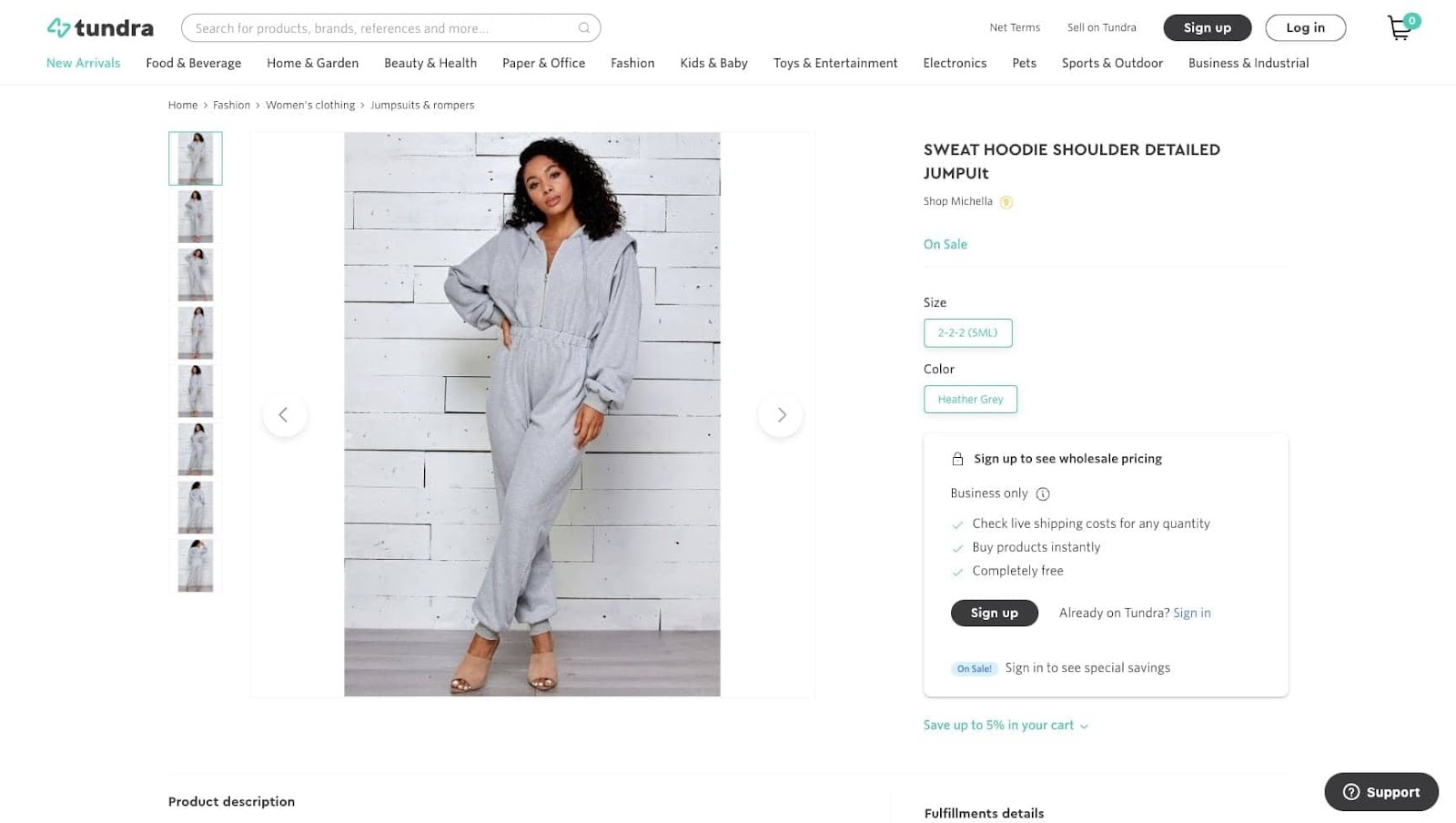
When choosing your supplier, consider where you want your products to ship from, their minimum order quantities, the reliability of the suppliers, customer service availability, and the consistency of the products.
Add your products to your store
Now, add your products to your ecommerce platform, including every relevant detail and tagging them for easy search navigation.
You’ll want to categorize your products into collections, not only by the obvious categories (tops, bottoms, socks, men, women, etc.) but also by unique qualifiers that shoppers may be searching for, such as color, new releases, fabric type, season, etc.
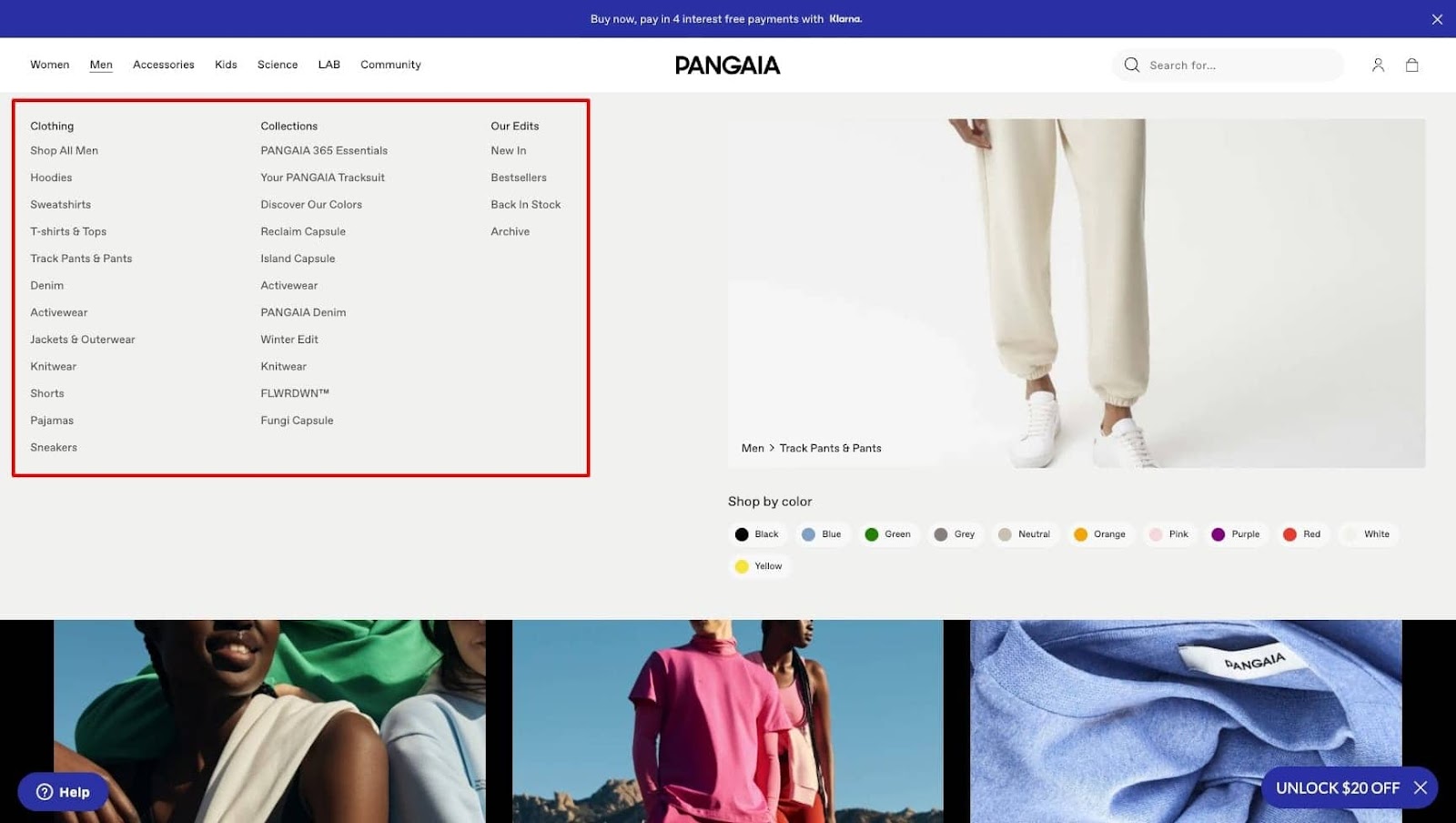
Doing the initial detailed legwork with your products will ensure a better experience for your shoppers down the road.
The easier it is for your shoppers to find what they want, the more likely they will become customers.
A deeply important part of building out your apparel store is how you price your products.
How you price your clothing will depend on a few factors:
- The uniqueness of your offering
- Competition in the space
- The perceived value of your product
- Your cost of goods sold (COGS)
Obviously, you need to price your products to maximize your profit margin while encouraging your shoppers to buy. It’s a thin line to walk but well worth it to attain a healthy revenue stream.
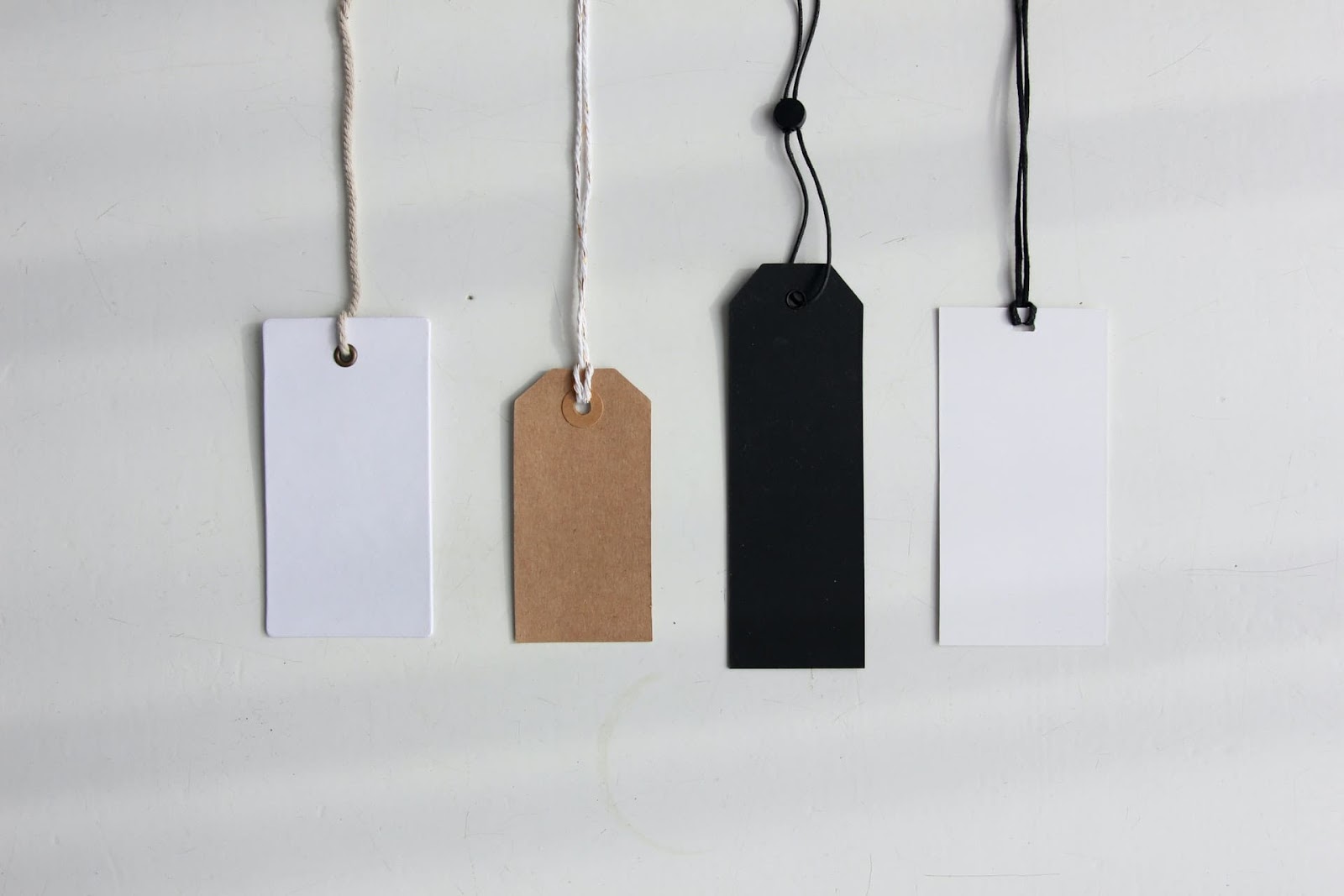
The most basic pricing strategy is markup pricing, which accounts for your COGS and operating expenses then adds a margin on top of it.
If your apparel brand has many competitors, you’ll want to do a competitive analysis to ensure you find a margin that stays in line with other sellers.
Typically, fashion brands will employ competitive pricing, using prices from comparable brands as a baseline and adjusting around that number to attract that customer base.
Higher-end brands and those with significant celebrity endorsements can employ value-based pricing or luxury pricing strategies to create larger margins based on the consumers’ perceived value of the product.
This applies to brands like Prada, Gucci, Supreme, and the like. Brands just starting won’t find themselves in this situation, but it’s good to be aware of.
Discount pricing is widespread in apparel as a supplemental pricing strategy. Special offers, seasonal discounts, and clearance sales all employ discount pricing, which aims to move a lot of inventory quickly.
This is a key time for online stores to use special offer pages to give their sales the best opportunity to succeed.
#cta-paragraph-pb#Check out our retail pricing strategy guide to get a complete understanding of all the strategies retailers use to become profitable.

A brand is bigger than the business it represents—it’s the outward-facing personality and style of the business. It is the frontend of the business.
Shoppers remember stores with great branding. The brand name sticks in their minds, and they recall the unique color palette and logo that went with it.
Brands that aren’t successful at this are lost to memory, fading away with any potential for profit.
Here’s what you need to create a brand identity:
- A memorable brand name. You want a name that isn’t easily forgotten, something that represents your brand well and won’t get old.
- A powerful color palette. The colors you use will define your brand and the emotion it evokes in your customers. Be mindful of your choices and consider color psychology to help guide you.
- An evocative yet straightforward logo. Just as with your brand color palette, your logo is brand-defining. It is literally the symbol of your brand, so don’t take it lightly.
- A brand story that resonates. Your name, logo, and color palette are your brand’s image, but customers want to learn about the character of your brand. How did your brand come to exist? Your origin story could be what builds your brand’s loyal customer base.
Brand names can be tricky, yet some brands happen upon them serendipitously.
This was the case for Copper Cow Coffee—their graphic designer knew they wanted shiny copper elements and to integrate the image of a cow, so the temp file name was copper cow coffee. And it stuck!
Another brand, Hippy Feet, found their brand identity by asking themselves questions about how Hippy Feet smelled and how it would interact at a party.
They ended up with their own take on a style guide that explored the major brand elements through colors, typography, and even a mood board.


Do the work to figure out your brand aesthetic and create a style guide. This will ensure that your branding is consistent across your store, your customer support, and your marketing.
Your branding isn’t set in stone—it can (and should) be updated from time to time.
Times change, and your brand will need to change with it. If you are on Shopify, it’s pretty simple to change your store name and domain (if the rebranding calls for it).
In between updates, though, you must stay consistent with your style guide.
#cta-visual-pb#<cta-title>Build your brand identity into your store<cta-title>Customize your store to match your brand’s personality and unique color scheme.Start customizing today
Now that you have a clear brand identity, you can build your store to reflect your unique style and personality.
Shopify and BigCommerce both come with tons of themes (free and premium) to get you started. We rounded up some of the best Shopify themes for any industry and the top free BigCommerce themes to help you decide.

Don’t just consider how a theme looks when making this decision.
Functionality is a huge factor in an ecommerce theme—from cross-selling capabilities and sidebar navigation to product filtering and blogging features.
Often, your theme just doesn’t cut it for your brand. It’s a good starting point, but it lacks the customization capabilities you need to quickly test and modify your store pages for the best conversions.
That’s where a powerful tool like Shogun Page Builder comes in. For Shopify and BigCommerce sellers, there’s no better app for creating your perfect store.
With more than 30 page elements to choose from, you can build pages from scratch, start from a pre-made template, or customize an existing page to include all the conversion optimizing pieces you need.
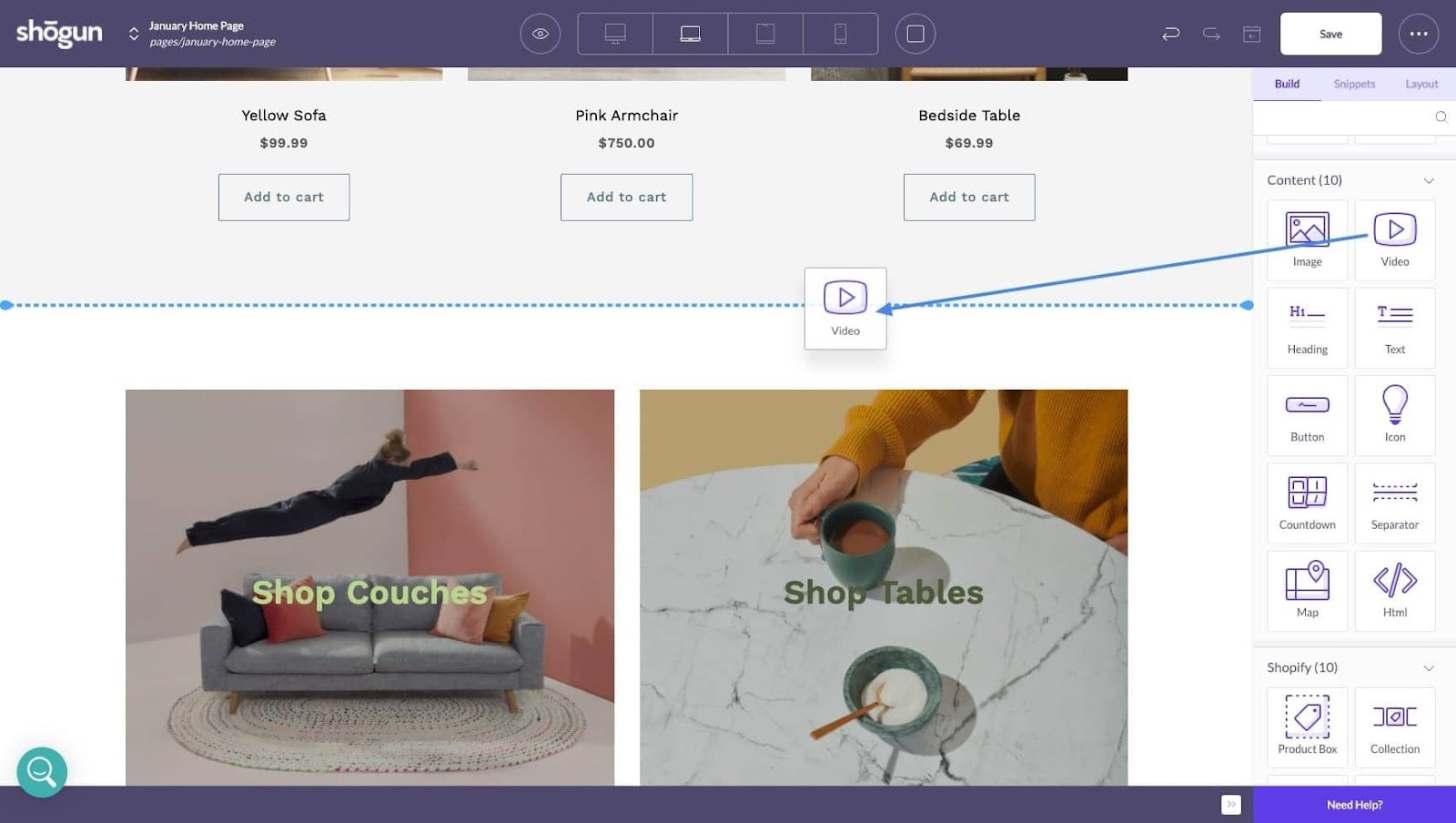
The biggest factors contributing to ecommerce success are excellent navigation and customer education—they are vital to building an efficient sales funnel.
Starting from your homepage, you can guide shoppers to your most popular product collections or to learn more about your brand via your About page or FAQ page.
This will help them find what they need quickly, driving them toward your deeply informative product pages (to which you’ve added thoughtful product descriptions, stunning product images, and valuable videos).
And don’t forget about dedicated landing pages.
These are conversion machines, delivering targeted traffic to messaging built for converting that audience. You can use them to highlight a new product or announce a special sale.
#cta-paragraph-pb#See some of the best special offer landing pages built with Page Builder in our 10 Best Special Offer Landing Pages ebook.
By consistently maintaining your sales funnel with the right landing pages, your customers will have exceptional shopping experiences and keep coming back for more.
For other ecommerce platforms (such as Magento and WooCommerce), you’ll likely need to look to a development agency (or in-house devs) to customize the look and feel of your store.
#cta-visual-ps#<cta-title>Not Your Average Shopify Store: 25 Gorgeous Custom Landing Pages<cta-title>See how custom pages make these 25 beautiful Shopify stores drive conversions and get inspired to elevate your store’s customer experience.Grab your free copy
You have all your ducks in a row, and your store looks incredible. Now, you need to pull your target audience in to fall in love with your apparel brand.
There are many ways to go about marketing your store.
1. Paid advertising. This takes many forms:
- Search ads: These are text ads that show within search results based on what keywords you bid on. Knowing your target audience, you can choose the phrases they would most likely use.
- Display ads: These are visual ads that appear on websites across the internet. You define your target audience, and the ads show on the sites they most often visit.
- Social media ads: Platforms like LinkedIn, Twitter, Instagram, Facebook, and Pinterest all rely on ad spend to exist. You can target your ideal audience with these platforms to the smallest degree and get your brand in front of the right people.
- Retargeting ads: Using tracking pixels from platforms like Facebook and Google (as well as some third-party services), you can show display ads to people who already visited your store on social media and websites they visit after that. It’s a great way to stay on their mind, pulling them back to your store.
2. SEO. Being able to attract free traffic is a massive win for any brand, which is why SEO content marketing is so important. To do this effectively, you need to research what keywords your customers use to search and write content that answers their questions. Once they are on your site, you can drive them to your products.
3. Social media. Another avenue for getting free traffic is by building a solid social media presence. Focus on the platforms you know your audience hangs out at and provide value and entertainment that drives your follower count up. The share potential allows you to increase your brand awareness and customer list.
4. Email marketing. Through the efforts of the above marketing strategies, you will start to build an email list. Your job is to nurture these leads toward purchase (and repurchase). There are reliable email marketing sequences that are key to finding success. By doing the critical work of segmenting your leads by where they are in the sales journey, you can get them the right message at the right time.
To be effective in your marketing, you have to understand your target customer. This means building a buyer persona that details who they are and how they get information online.
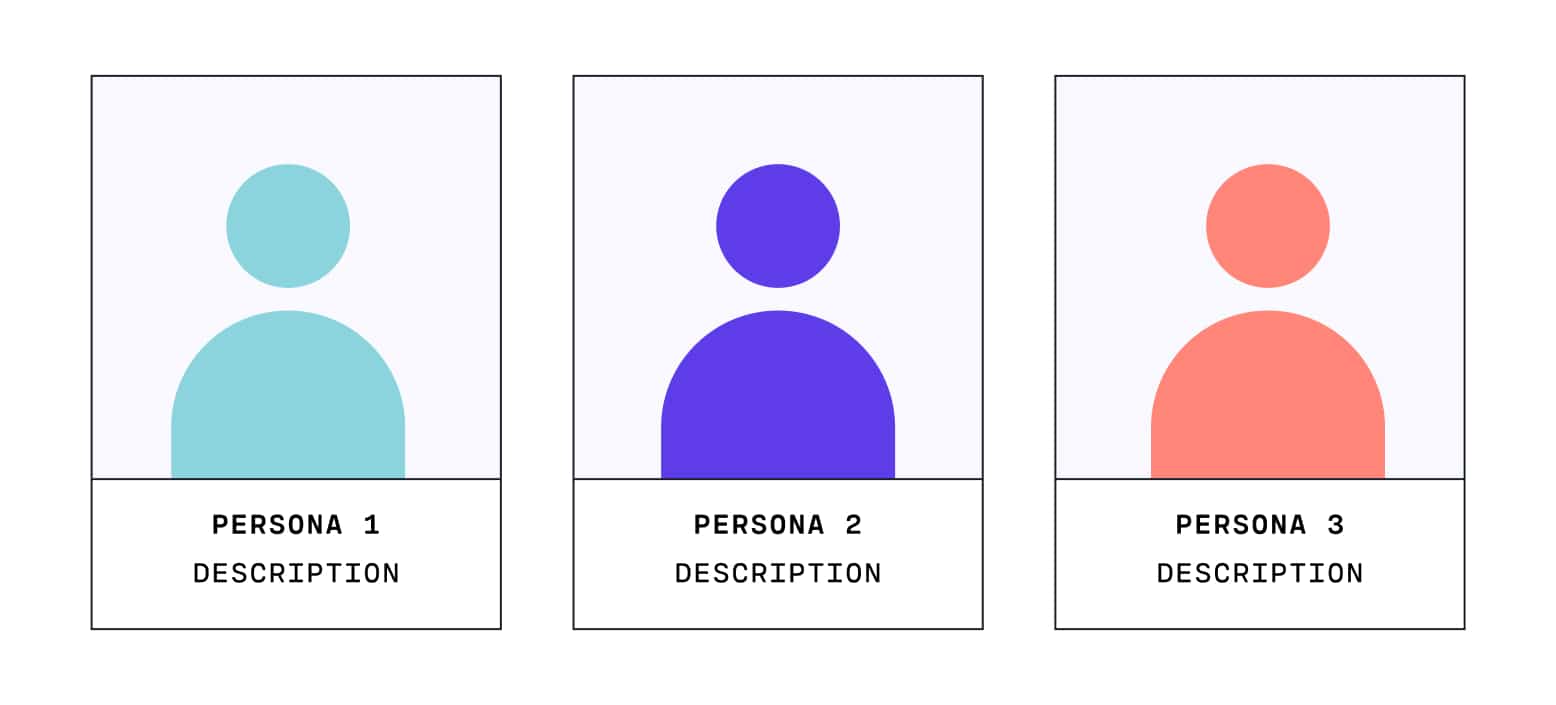
A buyer persona will include:
- Demographics. This is a general outline of who the customer is—their age, ethnicity, gender, education, salary, location, marital status, etc.
- Behavior. What does their day-to-day life look like? Think about their hobbies, interests, modes of transportation, pets, etc.
- Pain points. What are they struggling with that your product could address? These will inform your messaging in a huge way.
- Goals. Think about what success looks like to them. For clothing brands, this could be feeling confident in public or looking professional for work. How can you help them get there?
- Sources of information. What media do they consume? Figure out what social media they use, if they prefer articles to videos, if they enjoy podcasts and which ones, how they use search engines, etc.
Knowing who your customers are will inform your marketing strategy. You’ll know what sites and social media to focus on, the search terms they tend to use, the problems you are solving for (and messaging against), and what they hope to gain from your product or service.
While all of your marketing channels are important, know that all these roads lead to one place—your online store.
It needs to be consistently on brand, easy to navigate, and full of compelling marketing messaging.
Given the uber-targeted nature of both paid advertising and email marketing, you can create landing pages that hit the exact right mark with the segments you are trying to convert.
This perfect match marketing messaging gives you the best possible chance of landing those sales.
Get your online clothing brand off the ground
Once you’ve successfully launched your apparel brand, you can begin the work of growing it.
As retail increasingly moves online, there’s no better time to throw your hat into the ecommerce ring. By acting strategically, you can grow your brand and your revenue.
We can’t wait to see your fresh new clothing brand.
#cta-visual-pb#<cta-title>Grow your store with custom landing pages<cta-title>Build high-converting custom landing pages to accelerate your store’s growth.Get Page Builder now

Sean Flannigan
Sean is one of Shogun's tireless content marketers. When he isn't creating exciting ecommerce content, he's probably biking or at the park.



